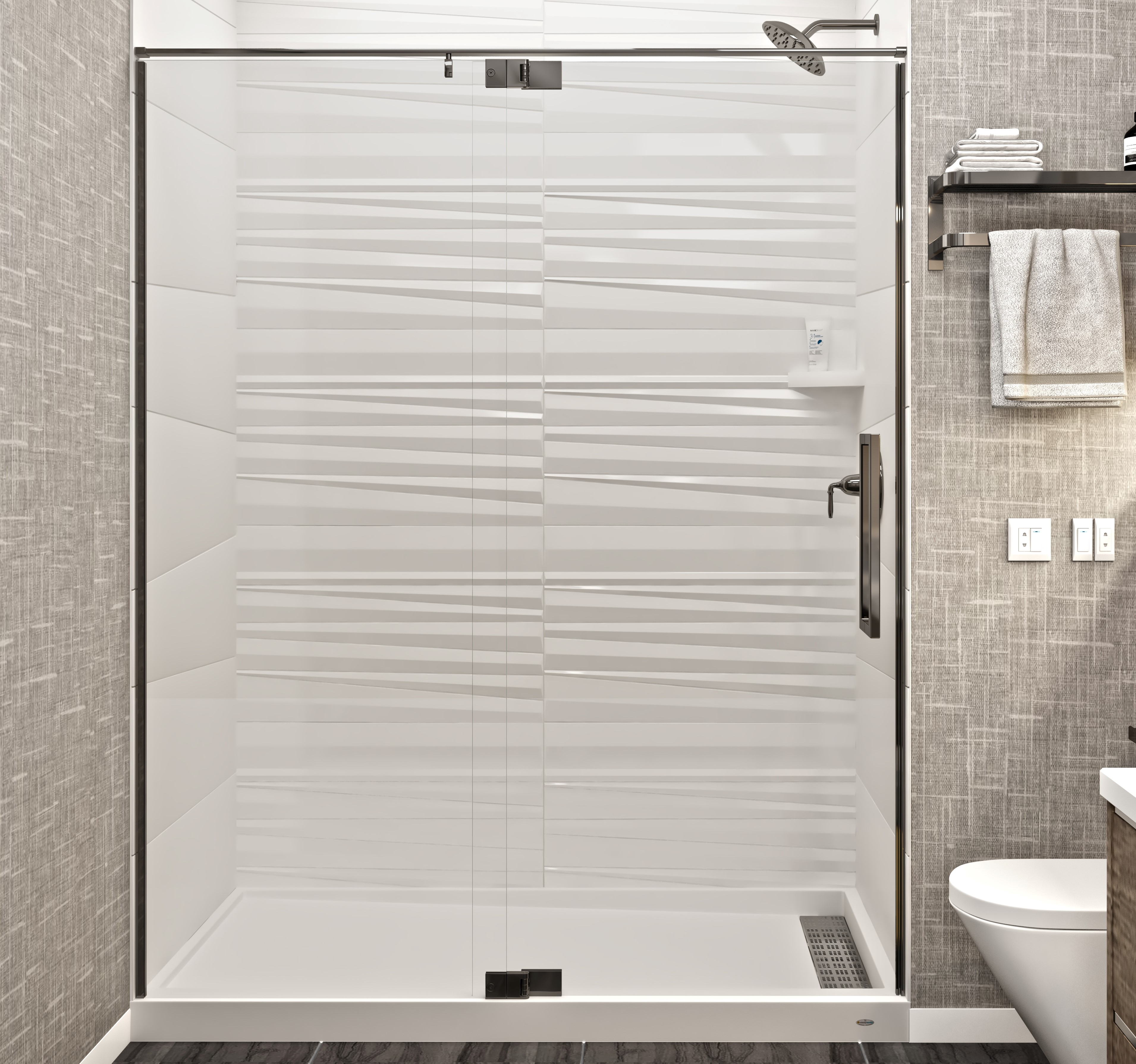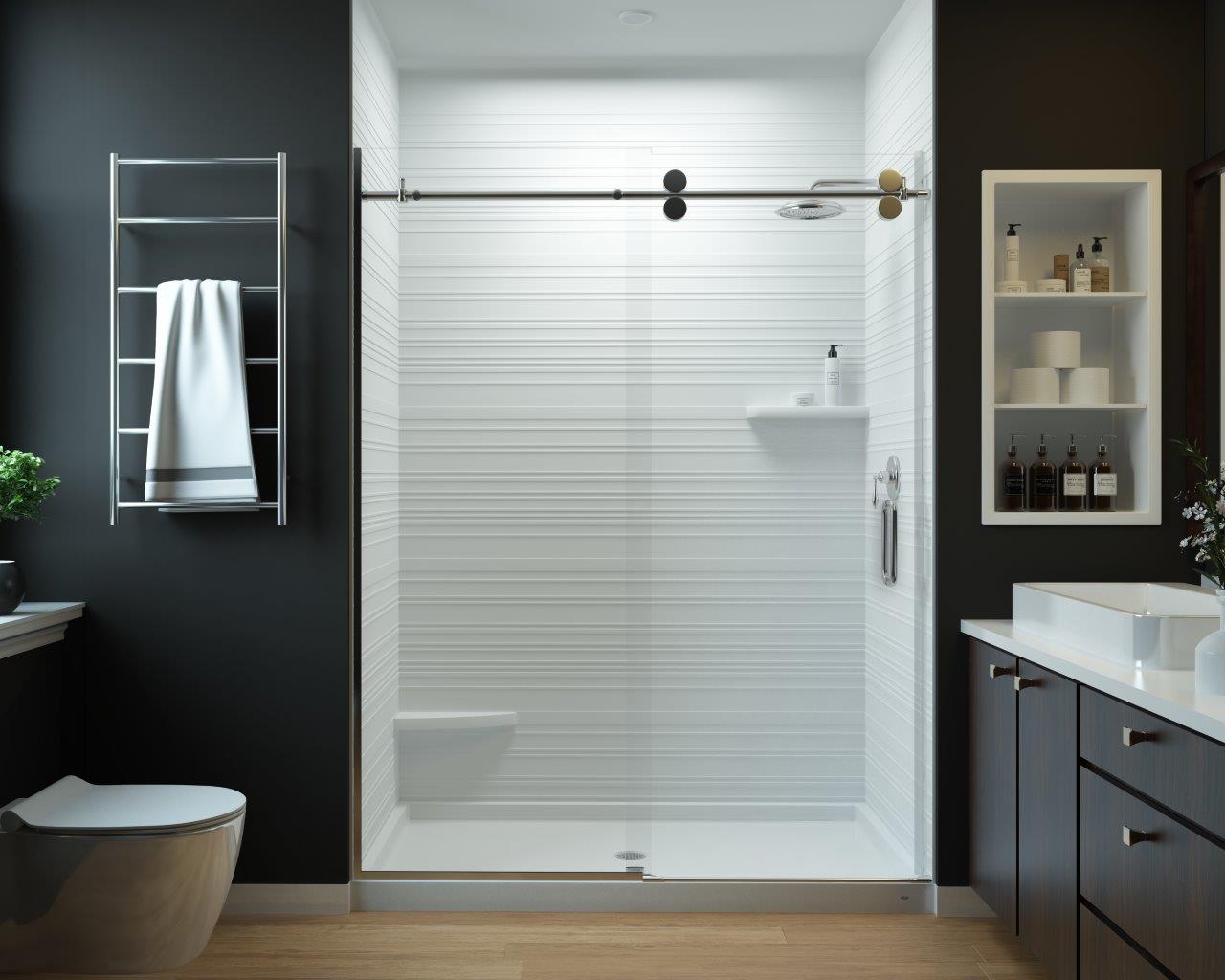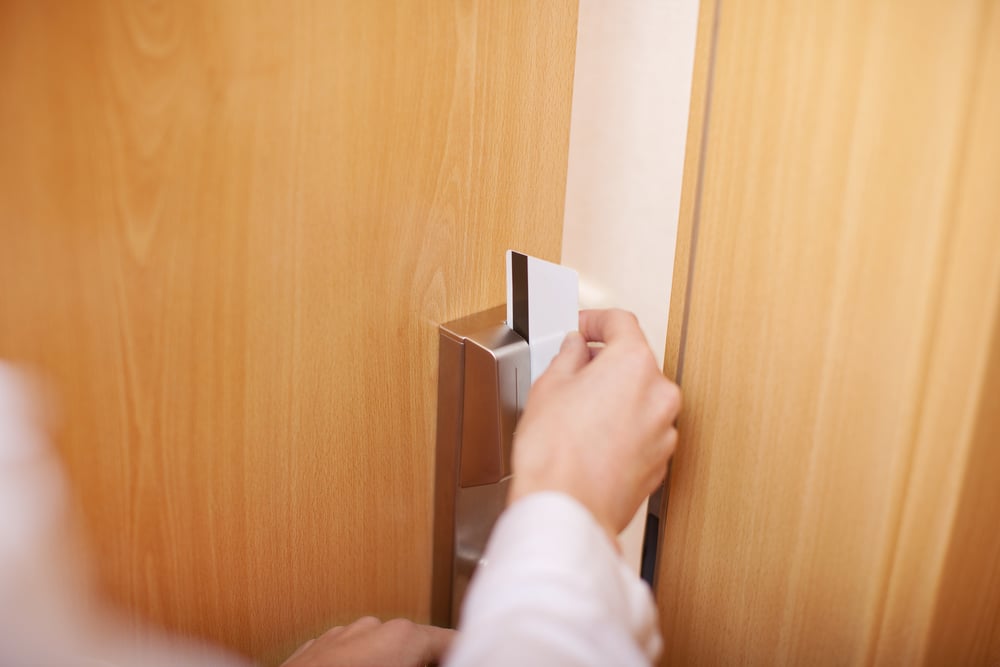Cast Marble vs. Large Format Tile for Hotel Showers
Among the most popular choices for hotel shower panels are cast marble and large format tile, each with its own pros and cons. For high-traffic showers, cast marble ultimately provides the superior return on investment by offering quicker, grout-free installation and greater cost efficiency compared to labor-intensive large format tile.
Common in Europe for many years, large format porcelain panels are the tile industry’s answer to large stone slabs. Now that they've made their way to the United States, are they a good choice for your property? We’ll explore the differences between the two materials, so you can decide which is better for your hotel shower walls.
Material Composition
Both cast marble and large format tile have a reputation for durability. Cast marble (or cultured marble) is a blend of crushed natural stone, pigment, and resin, which is molded into shower panels of varying sizes, shapes, and textures. These panels are completely groutless and feature a gel coat finish for a durable, non-porous surface that holds up to heavy use and cleaning.
When we refer to large format tiles, we’re talking about panels made from slab material. These are typically produced to a standard 39”x118” (1mx3m) and sometimes cut down into smaller increments (see below). These panels are made from different materials, like porcelain, ceramic, or natural stone. The most popular, porcelain, is made from natural clays, quartz, and feldspar. It’s fired at high temperatures to produce a dense, durable material that is scratch and moisture resistant. Both materials are durable enough to stand up to heavy commercial use, ideal for the hospitality industry.
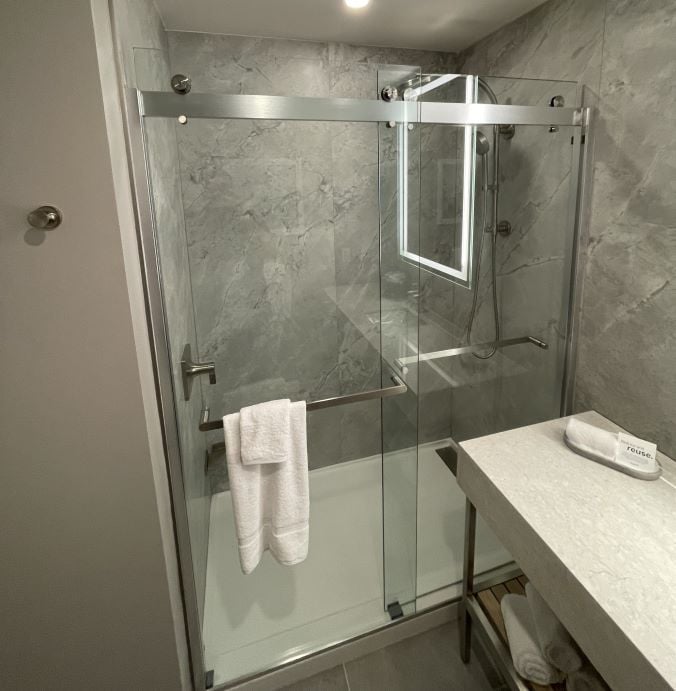 Large format porcelain
Large format porcelain
Aesthetics
Cast marble shower panels are available in a wide range of styles, from tile-like patterns to unique shapes and textured finishes. However, they’re limited to solid colors. Large format porcelain panels offer color variation and designs in the form of vein patterns, wood designs, and fabric looks. In public buildings, you’ll often see large format tile on accent walls and hallways. Its large size can create a dramatic effect while making a space appear larger.
However, there are two major design downfalls to having this material in the shower. #1: Because these large format panels are typically made to be 39” x 118”, the back wall typically features at least one grouted seam in the center of most back walls or any wall wider than 39”. Cast marble showers need only one back panel (if the shower is up to 62” wide). #2: the lack of textured designs. Most large formats only have a smooth surface – so if you’re looking to add depth or tactile richness to your space, cast marble is your best bet.
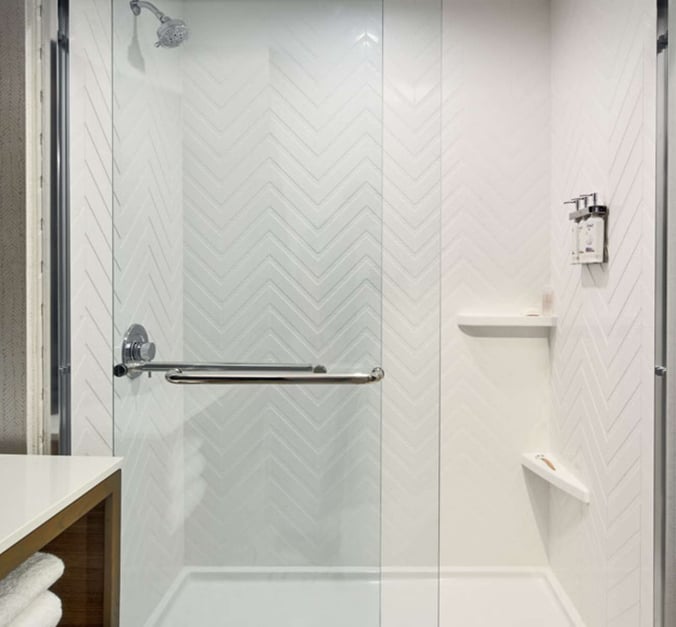 Cast marble shower
Cast marble shower
Installation and Maintenance
When it comes to installation, cast marble shower panels have the upper hand. They can be installed in hours rather than days, saving your project weeks of installation. Unlike tile, these shower walls are installed without grouting, mudding, curing, or sealing. They can be cut with a standard circular saw with masonry blade (available at most local hardware stores) and simply dot-mount glued onto greenboard.
Installing large format porcelain panels is more complicated and typically requires specialized tools. The process requires cementitious backerboard, waterproofing membranes, mortar on the substrate, and back-buttering of the slab. This material also tends to be more rigid, making it more susceptible to breakage during installation.
Cast marble requires little to no maintenance since it's completely groutless and permanently sealed. Because large format tile still requires grout, ongoing maintenance is needed to prevent mold and mildew buildup.
Waste
Most large format tiles come in giant slabs, requiring a significant amount of material to be cut in order to fit a standard shower wall. In a lot of cases, you’re cutting off several feet just to meet a ceiling height of 96”. This results in a lot of waste – averaging more than 10 square feet per shower.
In contrast, cast marble panels are poured into molds of varying sizes. We help you order the panel sizes that make the most sense for your shower project. Molds can also be blocked off and poured to a shorter height if need be, like in the case of tub surrounds. This further minimizes cutting off excess material in the field, drastically reducing the amount of waste.
Most large format tiles are also shipped from overseas, which can increase your project's carbon footprint. Mincey shower walls and pans are made in Gainesville, GA and delivered directly to your jobsite. This can reduce your environmental impact and your lead times!
Cost
Cast marble material is generally less expensive than large format panel material. Considering the overseas shipping, time-consuming installation, and significant amount of waste involved, large format is usually the more costly option. Mincey panels, on other hand, are poured to shower height, easier to install, and shipped domestically. When it comes to budget, cast marble usually wins.
Ultimately, deciding between both options boils down to a combination of style and budget. Cast marble offers textures and three-dimensional patterns, while large format tiles offer more color variation and marbleized patterns. If factors like installation, waste, and cost are important, cast marble probably makes the most sense for the shower space. On the other hand, the boldness and style of large format is perfect for areas like accent walls in public spaces and even in exterior cladding decoration.
Want to learn more about shower panels? Read our guide.


